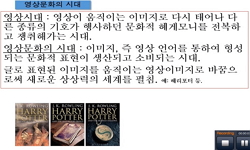Megalithic tombs, represented by stone henge, emerged during the Middle Neolithic period in Europe and played an active role as an ideological medium to emphasise communality and equality within a community. By contrast, the Corded Ware Culture and th...
http://chineseinput.net/에서 pinyin(병음)방식으로 중국어를 변환할 수 있습니다.
변환된 중국어를 복사하여 사용하시면 됩니다.
- 中文 을 입력하시려면 zhongwen을 입력하시고 space를누르시면됩니다.
- 北京 을 입력하시려면 beijing을 입력하시고 space를 누르시면 됩니다.

유럽 선사시대 개인의 정체성 형성과 젠더 - 독일 남부지역 출토 무덤을 중심으로 = The Formation of Individual Identity and Gender in European Prehistory
한글로보기https://www.riss.kr/link?id=A104649112
-
저자
김종일 (서울대학교 고고미술사학과)
- 발행기관
- 학술지명
- 권호사항
-
발행연도
2015
-
작성언어
Korean
-
주제어
유럽 선사시대 ; 개인성 ; 공동체성 ; 권력 ; 개인의 성장 ; 젠더 ; European Prehistory ; Individuality ; Communality ; Power ; the growth of individuals ; Gender
-
등재정보
KCI등재
-
자료형태
학술저널
-
수록면
72-105(34쪽)
-
KCI 피인용횟수
0
- 제공처
-
0
상세조회 -
0
다운로드
부가정보
다국어 초록 (Multilingual Abstract)
Megalithic tombs, represented by stone henge, emerged during the Middle Neolithic period in Europe and played an active role as an ideological medium to emphasise communality and equality within a community. By contrast, the Corded Ware Culture and the Bell Beaker Culture, which originated from Eastern Europe (or the Russian Steppe) and around the Rhine river respectively, and afterwards spread out in Central Europe, witnessed the emergence of individual burials and gender categorisation between male and female, which were evidenced by body orientation and burial goods. This phenomenon is continuously observed in the Early Bronze Age and understandably becomes a background of the growth of tumulus in the Middle Bronze Age.
This process has been interpreted as an incessant process with a gradual growth of individuals and the emergence of elite. This article attempts to point out the fact that the existing accounts suggested by European Prehistorians, have failed to consider the change and the competitions between various structures (or structural principles) based upon the extant Early Bronze Age burials found in South Germany and Austria in a proper way. At the same time, it will be argued that various structures (or structural principle) such as communality, equality and individuality, emerged and competed each other, and thus finally led to construction of massive individual tumulus, which mediated the constitution of power (or its network), and thus consolidated social recognition of social power and institutionalisation of it behind the growth of individuals.
In addition, power execution observed in the Middle Bronze Age (such as emphasis on masculinity and masculine body, and individual armoury and ornaments), seems to emerge based upon the change and the competition of such structures (or structural principles).
국문 초록 (Abstract)
유럽 중기 신석기 시대에는 스톤헨지로 대표되는 소위 거석무덤이등장하여 공동체의 무덤으로 사용되는 동시에 공동체 내의 평등성을강조하는 이데올로기적 기제로 사용되었다. 이에 비해...
유럽 중기 신석기 시대에는 스톤헨지로 대표되는 소위 거석무덤이등장하여 공동체의 무덤으로 사용되는 동시에 공동체 내의 평등성을강조하는 이데올로기적 기제로 사용되었다. 이에 비해 후기에 들어오면 스텝지역 및 동유럽에서 시작된 승문토기(Corded ware)문화와 대서양 연안 혹은 라인 강 근처에서 발달하여 유럽전역으로 확산되어간 벨 비커(Bell Beaker) 문화가 등장하여 주로 개인의 무덤으로 대표되는 동시에 남성과 여성 사이의 구분이 무덤의 두향과 부장품의 차이에서 확연히 확인된다. 이러한 현상은 청동기 초기에도 지속되며 청동기 중기 이후에 등장하는 거대한 봉분을 가진 무덤들의시작과 연결되는 것으로 이해되어왔다. 또한 유럽고고학계 내에서하나의 연속적인 과정으로써 개인의 성장과권력(자)의 등장이라는 핵심개념으로 이해되어 왔다. 이 글에서는 초기 청동기 시대 무덤자료가 잘 남아 있는 독일 남부 및 오스트리아 지역 출토 무덤군의 무덤자료들을 분석하여 지금까지의 유럽학계의 해석이 후기 신석기 시대로부터 초기 청동기 시대 후기까지의 시대적 차이에 따른 구조적 원칙의 변화와 경쟁에 대해 주목하고 있지 않음을 지적하고자 한다. 이와 동시에 소위‘개인의 성장’이면에서는 공동체성과 평등성, 개인성 (개인 간 차이와 차별에 대한 강조 등을 포함)과 같은 다양한 사회의 구조적 원칙들이 등장하여 경쟁하는 와중에 최종적으로 거대한봉분을 가진 단독무덤의 조영과 이를 매개로 한 권력(자)의 형성, 그리고 그러한 과정을 통해 형성된 권력의 사회적 인식과 내면화가 가능했던 것으로 파악하고자 한다. 또한 이러한 구조적 원칙들의 경쟁과 변화를 거쳐 중기 청동기 시대 이래 관찰되는 권력의 행사 방식(개인의 무구와 장신구, 그리고 남성성의 강조)이 등장하는 것으로이해하고자 한다.
참고문헌 (Reference)
1 김종일, "한국중기무문토기문화의사회구조와상징체계" 국사편찬위원회 104 : 2004
2 김종일, "한국고대사연구의 자료와 해석" 사계절 2014
3 김종일, "움직이는세상, 움직여야하는고고학" 서경출판사 2012
4 김종일, "물질문화와농민의삶(문화로보는한국사 2)" 태학사 2009
5 김종일, "“계층 사회와 분지배자의 출현”을 넘어서" 한국고고학회 63 : 150-176, 2007
6 Neugebauer, C, "Überlick das Endneolithickum im Unteren Traisental" 5 : 73-83, 1994
7 Reinecke, P, "Zur Chronologischen Gliederung der Süddeutschen Bronzezeit" 8 : 43-44, 1924
8 Spatzier, A, "Untersuchungen zu Chronologie, Grabstörung und Struktur des frühbronzezeitlichen Gräberfelds Franzhausen I, Niederösterreich" 82 (82): 215-247, 2007
9 Thomas, J, "Time, Culture & Identity" Routledge 1996
10 Hamilakis, Y, "Thinking through the body. Archaeology of Corporeality" Kluwer/Plenum 2001
1 김종일, "한국중기무문토기문화의사회구조와상징체계" 국사편찬위원회 104 : 2004
2 김종일, "한국고대사연구의 자료와 해석" 사계절 2014
3 김종일, "움직이는세상, 움직여야하는고고학" 서경출판사 2012
4 김종일, "물질문화와농민의삶(문화로보는한국사 2)" 태학사 2009
5 김종일, "“계층 사회와 분지배자의 출현”을 넘어서" 한국고고학회 63 : 150-176, 2007
6 Neugebauer, C, "Überlick das Endneolithickum im Unteren Traisental" 5 : 73-83, 1994
7 Reinecke, P, "Zur Chronologischen Gliederung der Süddeutschen Bronzezeit" 8 : 43-44, 1924
8 Spatzier, A, "Untersuchungen zu Chronologie, Grabstörung und Struktur des frühbronzezeitlichen Gräberfelds Franzhausen I, Niederösterreich" 82 (82): 215-247, 2007
9 Thomas, J, "Time, Culture & Identity" Routledge 1996
10 Hamilakis, Y, "Thinking through the body. Archaeology of Corporeality" Kluwer/Plenum 2001
11 Shennan, S. E, "The social organisation at Branc" 49 : 279-287, 1975
12 Barrett, J. C, "The monumentality of death: the character of Early Bronze Age mortuary mounds in southern Britain" 22 (22): 179-190, 1990
13 Treherne, P, "The Warrior's beauty: the masculine body and self-identity in Bronze Age Europe" 3 : 105-144, 1995
14 Cunliffe, B, "The Oxford Illustrated Prehistory of Europe" Oxford University Press 1994
15 Hodder, I, "The Domestication of Europe" Basil Blackwell 1990
16 Coles, J. M, "The Bronze Age in Europe" Methuen and Co Ltd 1979
17 Sofaer, J. R, "The Body as Material Culture" Cambridge University Press 2006
18 Gräslund, B, "The Birth of Prehistoric Chronology" Cambridge University Press 1987
19 Kowla′nska-Piaszykowa, M, "The Barrow Burial Ground from the Early Bronze Age in Łeki Małe, Wielkopolska (Greater Poland) region" Archaeological museum in Poz′nan 2008
20 Duday, H, "The Archaeology of the Dead" Owbow 2009
21 Parker-Pearson, M, "The Archaeology of Death and Burial" Sutton Publishing 1999
22 Chapman, R, "The Archaeology of Death" Cambridge University Press 1981
23 Goldstein, L, "The Archaeology of Death" Cambridge University Press 53-69, 1981
24 Pader, E. J, "Symbolism, Social Relations and the Interpretation of Mortuary Remains" BAR 1982
25 Shanks, M, "Symbolic and Structural archaeology" Cambridge University Press 129-154, 1982
26 Parker-Pearson, M, "Symbolic and Structural Archaeology" Cambridge University Press 99-113, 1982
27 Bartelheim M, "Studien zur böhmischen Aunjetitzer Kultur: Chronologie und chronologische Untersuchungen, vols.1- 2" 1998
28 Shanks, M, "Social theory and Archaeology" Polity 1987
29 Shennan, S. E, "Social organisation in the Earliest Bronze Age of Czechoslovakia: a study based on the cemeteries of the Nitra group" University of Cambridge. 1978
30 Gosden, C, "Social Being and Time" Blackwell 1994
31 Gowland, R, "Social Archaeology of Funerary Remains. Oxford: Oxbow" Kluwer Academic/Plenum Publishers 2006
32 Neugebauer, J. W, "Römisch-Germanische Forschungen, Band 49" Mainz am Rhein 1991
33 Köster, C, "Prähistorische Zeitschrift. Bd. 43/44" 1966
34 Champion, T, "Prehistoric Europe" Academic Press 1984
35 Sørensen, M.L.S, "Past Bodies" Oxbow 59-68, 2008
36 Whittle, A, "Neolithic Europe: A Survey" Cambridge University Press 1985
37 Tainter, J. R, "Mortuary practices and the study of prehistoric social systems" 1 : 105-141, 1978
38 O'Shea, J, "Mortuary Variability: an archaeological investigation" Academic Press 1984
39 Humphreys, S. C, "Mortality and Immortality: the anthropology and archaeology of death" Academic Press 1981
40 Bertemes, F, "Kulturgeschichtliche und Paläometallurgische Studien" 1989
41 Hundt, H. -J, "Katalog Straubing I. Die Funde der Glockenbecherkultur und der Staubinger Kultur" Lassleben 1958
42 Höfer, P, "Jahresschrift für die Vorgeschichte der sächsischthüringischen Länder, Ausgabe 5" 1-59, 1906
43 Sofaer, J, "Invisible People and Processes" Leicester University Process 192-202, 1997
44 Rakita, G. F. M, "Interacting with the Dead – Perspectives on Mortuary Archaeology for the New Millennium" University Press of Florida 2005
45 Braithwaite, M, "Ideology, power and Prehistory" Cambridge University Press 93-110, 1984
46 Tilley, C, "Ideology, Power, and Prehistory" Cambridge University Press 111-146, 1984
47 Miller, D, "Ideology, Power and Prehistory" Cambridge University Press 1-15, 1984
48 Hodder, I, "Ideology, Power and Prehistory" Cambridge University Press 51-68, 1984
49 Sørensen, M.L.S, "Gender Archaeology" Polity 2000
50 Reiter, V, "Frühbronzezeitliche Brandbestattungen von Franzhausen II und Ratzersdorf" Verlag der Österreichischen Akademie der Wissenschaften 2008
51 Neugebauer, C, "Franzhausen. Das frühbronzezeitliche Gräberfeld I. FÖMat A5/1" Bundesdenkmalamt, Abteilung für Bodendenkmalpflege 1997
52 Barrett, J. C, "Fragments from antiquity" Blackwell 1994
53 Kim, Jong-Il, "Formation and Change in Individual Identity between the Bell Beaker Culture and the Early Bronze Age in Bavaria" Archaeopress 2005
54 Harding, A. F, "European Societies in the Bronze Age" Cambridge University 2000
55 Heyd, V, "Die Glockenbecherkultur in Süddeutschland - Zum Stand der Forshung einer Regionalprovinz entlang der Donau" 87-106, 1997
56 Ruckdeschel. W, "Die Frühbronzezeitlichen Gräber Südbayerns -Ein Beitrag zur kenntnis der Straubinger Kultur" Habelt 1978
57 Probst, E, "Deutschland in der Bronzezeit" C. Bertelsmann 1996
58 Berner, M, "Demographie der Bronzezeit. Paläodemographie – Möglichkeiten und Grenzen" Verlag Marie Leitdorf 35-42, 1997
59 Pellegrini, A, "Craniofacial morphology in Austrian Early Bronze Age populations reflects sex-specific migration patterns" 89 : 1-13, 2011
60 Morris, I, "Burial and ancient society" Cambridge University Press 1987
61 Jensen, C. K, "Burial & Society" Aarhus University Press 1997
62 Gimbutas, M, "Bronze Age cultures in Central and Eastern Europe" Hague-London 248-265, 1965
63 Last, J, "Books of Life: Biography and Memory in a Bronze Age Barrow" 43-53, 1998
64 Rebay-Salisbury, K, "Body Parts and Body Wholes" Oxbow 2010
65 Neugebauer, J. W, "Archäologie in Niederösterreich. St. Pölten und das Traisental" Sankt Pölten 1993
66 Brown, J. A, "Approaches to the social Dimensions of Mortuary Practices" 1971
67 Saxe, A. A., "Approaches to the Social Dimensions of Mortuary Practice" 39-57, 1971
68 Binford, L, "Approaches to the Social Dimensions of Mortuary Practice" 6-29, 1971
69 Renfrew, C, "Approaches to Social Archaeology" Harvard University Press 1984
70 Kim, .Jong-Il, "An Archaeology of death" Seoul National University 15 : 2002
71 Mizoguchi, K, "A historiography of a linear barrow cemetery: a structurationist's point of view" 11 (11): 39-49, 1992
72 Trigger, B, "A History of Archaeological Thought" Cambridge University Press 1996
동일학술지(권/호) 다른 논문
분석정보
인용정보 인용지수 설명보기
학술지 이력
| 연월일 | 이력구분 | 이력상세 | 등재구분 |
|---|---|---|---|
| 2028 | 평가예정 | 재인증평가 신청대상 (재인증) | |
| 2022-01-01 | 평가 | 등재학술지 유지 (재인증) |  |
| 2019-01-01 | 평가 | 등재학술지 유지 (계속평가) |  |
| 2016-01-01 | 평가 | 등재학술지 유지 (계속평가) |  |
| 2012-01-01 | 평가 | 등재학술지 유지 (등재유지) |  |
| 2009-01-01 | 평가 | 등재학술지 선정 (등재후보2차) |  |
| 2008-01-01 | 평가 | 등재후보 1차 PASS (등재후보1차) |  |
| 2006-01-01 | 평가 | 등재후보학술지 선정 (신규평가) |  |
학술지 인용정보
| 기준연도 | WOS-KCI 통합IF(2년) | KCIF(2년) | KCIF(3년) |
|---|---|---|---|
| 2016 | 0.29 | 0.29 | 0.28 |
| KCIF(4년) | KCIF(5년) | 중심성지수(3년) | 즉시성지수 |
| 0.44 | 0.59 | 0.812 | 0.22 |




 KCI
KCI






